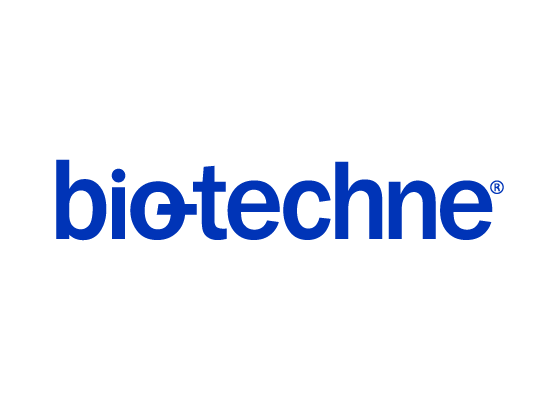Rat CD4 Alexa Fluor® 488-conjugated Antibody
R&D Systems, part of Bio-Techne | Catalog # FAB65771G


Key Product Details
Species Reactivity
Applications
Label
Antibody Source
Product Specifications
Immunogen
Specificity
Clonality
Host
Isotype
Applications for Rat CD4 Alexa Fluor® 488-conjugated Antibody
Flow Cytometry
Formulation, Preparation, and Storage
Purification
Formulation
Shipping
Stability & Storage
- 12 months from date of receipt, 2 to 8 °C as supplied.
Background: CD4
CD4 (cluster of differentiation 4), also known as L3T4 or T4, is a 55 kDa single chain type I transmembrane glycoprotein belonging to the immunoglobin (Ig) superfamily. CD4 is predominantly expressed on most thymocytes, a subset of mature T lymphocytes, and weakly on monocytes, tissue macrophages, dendritic cells, and granulocytes. It is also expressed on neurons and glial cells in the brain (1). CD4 is expressed along with CD8 on double positive T cells during their development in the thymus. Either CD4 or CD8 expression is then lost giving rise to single positive (SP) CD4+ or CD8+ mature T cells. CD4+ SP cells (T helper cells) further differentiate into multiple subsets of CD4+ cells including Th1, Th2, Th17, Tfh, and Treg cells which regulate humoral and cellular immunity (2). The extracellular region of CD4 consists of 372 amino acids (aa) with four immunoglobin-like domains (D1-D4). The structures of D1 and D3 resemble variable (IgV) domains while D2 and D4 resemble constant (IgC) domains (3).
Given its critical role in T cell development, CD4 also has diverse immunology-related functions. CD4 acts as a coreceptor with the T-cell receptor (TCR) during T cell activation and thymic differentiation by binding directly to major histocompatibility complex (MHC) class II antigens and associating with the protein tyrosine kinase, Lck (4). This interaction contributes to the formation of the immunological synapse (5). Defects in antigen presentation cause dysfunction of CD4+ T cells and the almost complete loss of MHC II expression on B cells in peripheral blood, as observed in severe combined immunodeficiency (SCID) (6). CD4 also functions as a receptor for the human immunodeficiency virus (HIV) by binding to gp120, the envelope glycoprotein of HIV-1. It has been shown that the V-like domains are critical for binding to gp120 (7). In immune mediated and infectious diseases of the central nervous system, CD4 functions as an indirect mediator of neuronal damage (8).
References
- Omri, B. Crisanti, P. Alliot, F. Marty, M. Rutin, J. Levallois, C. Pessac, B. (1994). CD4 expression in neurons of the central nervous system. International Immunology, 6(3):377. doi:10.1093/intimm/6.3.377.
- Wan, Y.Y. & Flavell, R.A. (2009). How diverse-CD4 effector T cells and their functions. Journal of Molecular Cell Biology, 1(1):20-36. doi:10.1093/jmcb/mjp001.
- Wu, H. Myszka, D. G. Tendian, S.W. Brouillette, C.G. Sweet, R.W. Chaiken, I.M. & Hendrickson, W.A. (1996). Kinetic and structural analysis of mutant CD4 receptors that are defective in HIV gp120 binding. Proceedings of the National Academy of Sciences, 93(26):15030. doi:10.1073/pnas.93.26.15030.
- Doyle, C. & Strominger, J.L. (1987). Interaction between CD4 and class II MHC molecules mediates cell adhesion. Nature, 330:256. doi:10.1038/330256a0.
- Vignali, D.A. (2010). CD4 on the road to coreceptor status. The Journal of Immunology, 184(11):5933-5934. doi:10.4049/jimmunol.1090037.
- Tasher, D. & Dalal, I. (2012). The genetic basis of severe combined immunodeficiency and its variants. The Application of Clinical Genetics, 5:67-80. doi:10.2147/tacg.s18693.
- Arthos, J. Deen, K.C. Chaikin, M.A. Fornwald, J.A. Sathe, G. Sattentau, Q.J. Sweet, R.W. (1989). Identification of the residues in human CD4 critical for the binding of HIV. Cell, 57(3):469. doi:10.1016/0092-8674(89)90922-7.
- Buttini, M. Westland, C.E. Masliah, E. Yafeh, A.M. Wyss-Coray, T. Mucke, L. (1998). Novel role of human cd4 molecule identified in neurodegeneration. Nature Medicine, 4(4):441. doi:10.1038/nm0498-441.
Alternate Names
Entrez Gene IDs
Gene Symbol
Additional CD4 Products
Product Documents for Rat CD4 Alexa Fluor® 488-conjugated Antibody
Product Specific Notices for Rat CD4 Alexa Fluor® 488-conjugated Antibody
This product is provided under an agreement between Life Technologies Corporation and R&D Systems, Inc, and the manufacture, use, sale or import of this product is subject to one or more US patents and corresponding non-US equivalents, owned by Life Technologies Corporation and its affiliates. The purchase of this product conveys to the buyer the non-transferable right to use the purchased amount of the product and components of the product only in research conducted by the buyer (whether the buyer is an academic or for-profit entity). The sale of this product is expressly conditioned on the buyer not using the product or its components (1) in manufacturing; (2) to provide a service, information, or data to an unaffiliated third party for payment; (3) for therapeutic, diagnostic or prophylactic purposes; (4) to resell, sell, or otherwise transfer this product or its components to any third party, or for any other commercial purpose. Life Technologies Corporation will not assert a claim against the buyer of the infringement of the above patents based on the manufacture, use or sale of a commercial product developed in research by the buyer in which this product or its components was employed, provided that neither this product nor any of its components was used in the manufacture of such product. For information on purchasing a license to this product for purposes other than research, contact Life Technologies Corporation, Cell Analysis Business Unit, Business Development, 29851 Willow Creek Road, Eugene, OR 97402, Tel: (541) 465-8300. Fax: (541) 335-0354.
For research use only